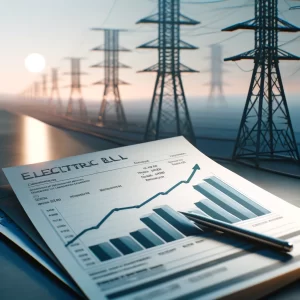
Ideally, your home’s solar system would perfectly match your electricity needs – no more and no less. However, there are times when the panels will generate more power than you consume (such as during sunny summer days), and other times when they may not generate enough (like on shorter or cloudier days and nights). This is where Net Metering and Net Billing come into play. These systems allow you to use the grid as storage, trading in any excess energy your panels produce for credits on your bill. Then, when your solar system can’t keep up with your electricity needs and you must rely on the grid, these credits can be used to offset the cost.
Net metering and net billing compensation structures, types of net metering and net billing, and where these programs are available nationwide are discussed in this article.
Net metering vs. Net billing
It is important to remember that net metering and net billing aren’t synonymous, despite their similarities. Depending on how participants are compensated, both programs compensate solar owners for transferring electricity to the grid when their panels overproduce. Generally, net metering credits equal the retail electricity rate (what you pay for electricity as a utility customer). On the other hand, net billing credits are equal to wholesale rates (what your utility company pays for electricity)
Net metering
Net metering allows you to receive bill credits, but the exchange is not typically in the form of money. Instead, these credits are stored and can be used when needed on overcast days. They can be carried over each month and have a one-to-one ratio with grid-produced electricity, meaning your solar panels’ output is equivalent to that of the grid. This simplifies your energy bill as you are only charged for your net usage, or consumption minus production. Net metering programs are a valuable method for solar owners to “store” their excess energy, making home solar systems even more beneficial. However, utility companies argue that since retail prices include business costs in addition to electricity value, net metering credits exceed the value of electricity and delivery.
Net billing
In net billing programs, you can sell excess energy generated by your solar panels to the utility, typically at wholesale prices, instead of “banking” the credits. Net billing is a monetary exchange in which the energy generated by your home solar system is treated like that of a large-scale solar project. However, with net billing, you will typically receive a lower compensation rate than with net metering.
Types of solar compensation programs
Types of solar compensation programs vary from state to state and utility to utility. As the renewables industry has grown and matured, different types of net metering and billing programs have emerged.
Retail net metering
One commonly used approach is retail net metering, where individuals are credited at the retail electricity rate for the energy generated by their solar panels. This can boost the worth of residential solar systems but may lower utility companies’ profits. Retail rates often encompass more than just energy expenses, with a portion being allocated to cover utility staff, maintenance, and other costs. Due to this, several utility companies are advocating for revisions to net metering policies that would offer significantly lower compensation rates for solar system owners.
Virtual net metering
Virtual net metering, also known as shared net metering, has advantages for those involved in collective renewable energy initiatives such as community solar. This system provides the same monetary reimbursement as traditional net metering, but with the added convenience of not needing the solar panels to be situated on the participants’ own properties. Instead, community solar members are typically assigned a share of a larger solar installation. If their designated portion generates surplus electricity that goes back into the grid, they will receive equal compensation through virtual net metering as if those panels were installed on their own roof.
Avoided-cost
Bill credits for avoided-cost bills differ from most retail net metering programs in that they do not correspond to a one-to-one compensation arrangement. In place of providing electricity to their homes, participants receive credits equal to the utility cost saved. As avoided-cost rates do not involve a one-to-one exchange, they can be categorized as net billing rather than net metering since they are monetary and not a one-to-one exchange.
Where can one find net metering and net billing programs?
Utilities have a tendency to resist net metering programs, and policies at the state and local level are subject to change. As previously stated, these compensation structures differ from one state or utility to another. For instance, Idaho and Texas do not require net metering, but some utilities may still provide it. To determine the specific programs offered in your area by your utility, it is advisable to seek advice from a reliable installer in your vicinity.
Some important points to remember are about net metering and net billing programs. These programs allow excess energy produced by home solar systems to be transferred to the grid, resulting in credits for the homeowner. The value of these credits is often based on the retail rate of electricity, but can also be lower depending on the program. As utilities often object to net metering, other compensation options are gaining popularity.
KEY TAKEAWAYS
- Net metering and net billing programs use overproduced electricity from home solar systems by transferring the excess energy to the grid. You receive credits for this energy you send to the grid in exchange.
- Net metering transactions are usually one-to-one, so the credits are often equal to the retail rate of electricity (aka what you pay).
- Net billing credits are often equal to the wholesale rate of electricity (aka what your utility pays), which is less than the retail rate.
- Utilities tend to oppose net metering programs, so alternative compensation programs are becoming increasingly popular.
- Incentive and compensation programs like net metering and net billing increase the value of solar panel systems .






